Planet earth stands out among the other celestial bodies in our solar system. It is not the smallest nor the largest; it holds the fifth position in terms of size. When compared to other planets in the Earth group, it surpasses them in mass, diameter, and density. Since the Earth is located in outer space, determining its weight is a challenging task. It cannot be simply placed on a scale and measured. Instead, its weight is calculated by summing up the mass of all the substances it is composed of. This calculation amounts to approximately 5.9 sextillion tons. To put this figure into perspective, it can be written mathematically as 5 900 000 000 000 000 000 000. The sheer number of zeros in this figure is enough to make your eyes dance.
Visualizing Earth’s Parameters: A Brief Historical Overview
In the early days of human civilization, there existed various theories regarding the dimensions, form, and weight of the Earth. According to ancient beliefs, the Earth’s structure resembled a semi-sphere, akin to a “flat plate,” supported by three whales and an enormous turtle positioned at the foundational level of this cosmic pyramid. Alternatively, elephants were sometimes proposed as substitutes for whales. Regardless, ancient societies generally agreed that the Earth was flat and possessed a distinct boundary.
During the Middle Ages, there were significant advancements in understanding the Earth’s shape and weight. Giordano Bruno, who unfortunately faced persecution by the Inquisition, was the first to discover that the Earth is spherical. Another important figure in Earth science was Magellan, a renowned explorer who provided practical evidence supporting the theory that the Earth is round.
History of measurements [ edit ]
Main article: Gravitational constant § History of measurement
The most precise relative measurements of the Earth’s local gravitational field were provided by a portable gravimeter developed in 1890 by Thomas C. Mendenhall, which used pendulums. This device was described in the 1897 Scientific Journal.
Earth’s mass can be indirectly measured by determining other quantities such as Earth’s density, gravity, or gravitational constant. The first measurement in the Schiehallion experiment of the 1770s underestimated the value by about 20%. The Cavendish experiment of 1798 found the correct value within 1%. By the 1890s, the uncertainty decreased to about 0.2%, and by 1930 it was reduced to 0.1% [15] [16].
The precise shape of the Earth has been accurately estimated to at least four significant figures since the 1960s (WGS66). As a result, the main factor influencing the uncertainty in determining the Earth’s mass has been the measurement of the gravitational constant. In the 1970s, the relative uncertainty was 0.06%, which improved to 0.01% (10^-4) by the 2000s. Currently, the relative uncertainty stands at 10^-4, which is equivalent to 6 × 10^20 kg in absolute terms, roughly the mass of a small planet (approximately 70% of the mass of Ceres).
Early calculations [ edit ]
Prior to the direct measurement of the gravitational constant, approximations of the mass of Earth were limited to approximations of Earth’s average density derived from observations of the crust and approximations of Earth’s volume. In the 17th century, approximations of Earth’s volume were based on an estimated circumference of 60 miles (97 km) in degrees of latitude, which corresponded to a radius of 5,500 km (86% of Earth’s actual radius of approximately 6,371 km). This resulted in an estimated volume that was about one-third smaller than the correct value. [18]
In the 18th century, our understanding of Newton’s law of universal gravitation enabled us to indirectly calculate the average density of the Earth by estimating the gravitational constant. The average density of the Earth was initially determined by observing the slight deviation of a pendulum near a mountain, as demonstrated in the Schiehallion experiment. Newton examined the experiment in his work “Beginnings,” but he pessimistically concluded that the effect would be too minuscule to be accurately measured.
In the years 1737 to 1740, Pierre Bouguer and Charles Marie de la Condamine embarked on an expedition with the aim of determining the density of the Earth. They employed a method that involved measuring the period of a pendulum, which in turn provided information about the force of gravity at different altitudes. The experiments were carried out in Ecuador and Peru, specifically at Pichincha volcano and Mount Chimborazo. In a paper published in 1749, Bouguer mentioned that they were able to observe a deviation of 8 angular seconds. Although the accuracy of their measurements was not sufficient for an exact estimation of the average density of the Earth, Bouguer argued that it was enough to demonstrate that the Earth was not hollow.
Schiehallion experiment [ edit ]
Main article: Schiehallion experiment
An additional proposal for the experiment was put forward to the Royal Society in 1772 by Neville Maskelyne, the Royal Astronomer. [21] He suggested that the experiment would bring prestige to the country in which it was conducted and proposed Whernside in Yorkshire, or the Blencathra-Skiddaw massif in Cumberland as suitable locations. The Royal Society established an Attention Committee to review the proposal, appointing Maskelyne, Joseph Banks, and Benjamin Franklin. [22] The Committee dispatched astronomer and surveyor Charles Mason to locate an appropriate mountain.
After an extensive search, Mason announced in the summer of 1773 that Schiehallion, a mountain located in the central part of the Scottish Highlands, was the most suitable candidate for the experiment [22]. Schiehallion was an isolated peak, unaffected by the gravitational pull of nearby hills, and its symmetrical ridge running from east to west made calculations easier. The experiment was carried out by Nevil Maskelyne, Charles Hutton, and Reuben Burrow, and was completed by 1776. Hutton (1778) reported that the average density of the Earth was estimated to be 9 5 >> that of Mt. Schiehallion [23]. This indicated an average density approximately 4 1/2 times higher than that of water (around 4.5 g/cm3), which is about 20% lower than the modern value. However, it is still significantly higher than the average density of normal rock, suggesting for the first time that the Earth’s interior might be predominantly composed of metal. Hutton estimated that this metallic portion occupies about 20/31 (or 65%) of the Earth’s diameter (compared to the modern value of 55%) [24]. By using the value for the Earth’s average density, Hutton was able to establish some values for Jerome Lalande’s planetary tables, which previously only expressed the densities of major objects in the solar system in relative units [23].
Cavendish experiment [ edit ]
Main article: Cavendish experiment
In 1798, Henry Cavendish became the first person to attempt a direct measurement of the gravitational attraction between two objects in a laboratory setting. By combining Newton’s Second Law and Newton’s law of universal gravitation, Cavendish was able to calculate the mass of the Earth.
Today, we determine the mass of the Earth using the gravitational constant and the average radius of the Earth:
Where the acceleration due to Earth’s gravity, “small g”, is equal to .
Cavendish’s experiment yielded an average density of 5.45 g/cm3, which is approximately 1% lower than the modern value.
19th century [ edit ]
In the 19th century, Francis Bailey and Henry Foster conducted an experiment to determine the density of the Earth using Cavendish’s method.
During this time, it was not common practice to explicitly state the absolute mass of the Earth, as it was more convenient to specify the radius and density. However, with the introduction of scientific notations using powers of 10 in the late 19th century, absolute mass values began to be more commonly used. Ritchie (1850) provided the mass of the Earth’s atmosphere as “11,456,688,186,392,473,000 pounds” (equivalent to 1.1 × 10 19 lb = 5.0 × 10 18 kg, modern value 5.15 × 10 18 kg) and noted that this enormous sum was negligible compared to the weight of the entire globe [25].
) The mass of the Earth was estimated to be 6.5 × 10^24 kg by Masius in 1859. Beckett (1871) mentioned that the “weight of the earth” is “5,842 quintillion tons” which is equivalent to 5.936 × 10^24 kg. According to the “New Volumes of the Encyclopædia Britannica” (Vol. 25, 1902), the Earth’s mass in gravitational measure is quoted as “9.81996 × 6370980^2” with the logarithm of the Earth’s mass equal to 14.600522, which is equivalent to 3.98586 × 10^14. It should be noted that this value represents the gravitational parameter in m^3 – s^-2 and not the absolute mass. The modern value for the gravitational parameter is 3.98600 × 10^14.
Experiments with pendulums continued throughout the first half of the nineteenth century. However, by the second half of the century, they were surpassed in efficiency by repetitions of Cavendish’s experiment, which is now considered the modern standard for determining the value of the gravitational constant, G.
The determination of the mass of the Earth, and therefore, is still obtained through precise repetitions of the Cavendish experiment.
In 1821, Francesco Carlini conducted measurements with pendulums in the Milan area and determined that the value of density, ρ, was 4.39 g/cm3. Edward Sabin further refined this value in 1827 to 4.77 g/cm3, and Carlo Ignazio Giulio improved it even further in 1841 to 4.95 g/cm3. Meanwhile, George Biddell Airy attempted to determine ρ by observing the difference in the period of a pendulum between the surface and the bottom of a mine. However, his experiments in Cornwall between 1826 and 1828 were unsuccessful due to fire and flooding. It wasn’t until 1854 that Airy obtained a value of 6.6 g/cm3 from measurements in a coal mine in Harton, Sunderland. Airy’s method assumed that the Earth was spherically stratified. Later experiments conducted by Robert von Sterneck in 1883 at various depths in mines in Saxony and Bohemia produced average values of ρ density ranging from 5.0 to 6.3 g/cm3. These findings led to the concept of isostasy, which limits the accuracy of measuring ρ either by deviating from the vertical plumb line or by using pendulums. Despite the challenges, Thomas Corwin Mendenhall conducted a gravimetric experiment in Tokyo and on the summit of Mount Fuji in 1880, resulting in a measured ρ value of 5.77 g/cm3. [ citation needed]
Updated information on the Earth’s mass
The modern value of the Earth’s mass is uncertain due to the difficulties in measuring the gravitational constant G.
Since the 1960s, there have been various attempts to measure G, but the results have been inconclusive. Some highly precise measurements conducted between the 1980s and 2010s have produced conflicting outcomes. [30] Zagitov (1969) estimated the Earth’s mass to be M ⊕ =5.973 (3) × 10 24 kg with a relative error of 5 × 10 -4, based on the measurement of G carried out by Heil and Chrzanowski (1942).
Since that time, there has been only a slight improvement in accuracy. Most of the modern measurements are repetitions of the Cavendish experiment, yielding results (within the standard uncertainty) ranging from 6.672 and 6.676 × 10 -11 m 3 kg -1 s -2 (with a relative error of 3 × 10 -4 ) in results reported since 1980. However, the recommended value by NIST in 2014 is close to 6.674 × 10 -11 m 3 kg -1 s -2, with a relative error below 10 -4. The Internet Astronomical Almanac
In 2021, the mass of the Earth, M ⊕5.9722 (6) × 10 24 kg [2], is recommended to have a standard uncertainty of 1 × 10 -4.
What is the weight of the Earth in kilograms?
The weight of the Earth in kilograms was first estimated by the ancient Greek scientist Eratosthenes. He devised a method to measure the size of the Earth by comparing the shadows of different cities in Greece. Using this data, Eratosthenes was able to develop a formula for calculating the volume of the Earth.
Isn’t this fascinating?
These pages provide information on various topics such as the weight of a cloud, the weight of a tank, the weight of a brain, and even a weight calculator.
Next in line was the renowned Italian physicist, mechanic, and astronomer Galileo Galilei, who made a groundbreaking discovery in the 17th century – the law of free fall. Following in his footsteps, Isaac Newton emerged as a key figure in the world of science, unveiling the law of gravity. According to this fundamental principle, the force of attraction between two objects is directly proportional to their mass and inversely proportional to the square of the distance separating them.
Now, armed with these formulas, we can proceed to calculate the weight of our very own Earth. The first estimation of Earth’s mass was made by Scottish scientist Dr. N. Makelin back in 1774. According to his calculations, the planet’s weight amounted to 5.879 sextillion tons. However, recent measurements have shown a slight increase in this figure, bringing the Earth’s weight to approximately 5.976 sextillion tons.
To put it simply, the Earth weighs approximately 5.976 sextillion tons.
Incidentally, you can easily determine the weight of the Earth using the principle of gravity. Simply suspend a small weight from a thread and measure its precise position. Then, place a ton of lead next to it. The gravitational attraction between these two objects will cause the small weight to shift ever so slightly – less than 0.00002 mm. Although this shift is minuscule, it can be utilized to calculate the Earth’s mass. By measuring the force of gravity exerted by the Earth on the weight and comparing it to the attractive force between the weight and the lead, the relative difference can be determined and used to calculate the Earth’s mass.
There is a quantifiable amount of energy, but no measure of weight
All tangible entities possess distinct characteristics, including gravitational influence and mass. However, attempting to determine the weight of planet Earth is a nonsensical endeavor. At first glance, this may seem peculiar, but it is not unfathomable. Our planet is perpetually in a state of free fall in outer space, where the notion of weight becomes irrelevant. Nonetheless, the substantial amount of matter it contains remains constant.
To determine the mass of the Earth, the most convenient method is to rely on gravitational effects. By suspending a lightweight object from a string and placing a heavy object nearby, we can observe the deflection of the lightweight object from the vertical position. According to Newton’s law, this deflection causes a slight decrease in the distance between the two objects. By measuring this contraction, we can calculate the gravitational force exerted by the Earth, as we already know the acceleration due to gravity on Earth is 9.81 m/sec2.
Distribution of the Earth’s mass
It is common knowledge that the composition of our planet is heterogeneous. Hence, the following is an approximate breakdown of the Earth’s total mass (in descending order):
- The mantle – a shell consisting of iron, calcium, and magnesium silicates. Its mass is approximately 4.043 x 1024 kg.
- The core, which is primarily composed of iron and nickel, weighs around 1.93 x 1024 kg.
- The Earth’s crust, where mankind resides, has a mass of approximately 0.026 x 1024 kg.
- The hydrosphere, which encompasses water bodies, accounts for about 0.0014 x 1024 kg.
- The atmosphere occupies a mass of roughly 0.0000051 x 1024 kg.
Dependence for determining the inertia measurement of the “house of men”
In order to calculate the inertia measurement of the “house of men”, we will consider the gravitational interaction of the spheres, based on Newton’s theory. According to this theory, we assume that the substance of the spheres is concentrated in their centers. Now, we can determine the mass of the Earth using Newton’s classical theory of gravitation:
F represents the force of mutual attraction between the bodies;
G is the gravitational constant, which is equal to 6.67408(31)-10-11 m³/(kg·s²);
m1 and m2 are the interacting inertia measurements;
R is the distance between the bodies.
If we compare the Earth and a ball weighing 1 kg in terms of their mass, the interaction between them would be 9.8 kg × m/s2. With a radius of 6.4 million meters, we can substitute these values into the given formula and through some simple calculations, determine that the mass of the Earth is approximately 6 × 1024 kg.
The Earth is the largest planet in the Earth group, surpassing Mars, Venus, and Mercury in mass. Mars weighs about 0.108 times the weight of Earth, Venus weighs 0.815 times, and Mercury weighs 0.055 times.
However, when compared to the gas giant planets, the Earth pales in comparison in terms of size and weight. Jupiter, for example, is 317.8 times heavier than our planet, making it a true “giant” in the solar system. Saturn, on the other hand, is 95.1 times heavier than Earth, Neptune is 17.2 times heavier, and Uranus is 14.5 times heavier.
With this information, we now have a better understanding of the Earth’s weight and how it compares to the other planets in our solar system.
Planet Earth and the Vastness of Space
One doesn’t require a scientific background to be aware of the fundamental coordinates of our planet. Every day, we can observe the radiant Sun, which serves as the center of our solar system, around which Earth revolves. During nighttime, we can also behold the presence of our only moon, which happens to be the fifth largest satellite in the entire solar system. Furthermore, on clear summer nights, we are treated to the breathtaking sight of the Milky Way, a luminous spectacle that represents the visible portion of our galaxy. It’s worth noting that our Sun, along with millions of other stars, traverses through the Orion arm of the Milky Way.
Delving deeper into the cosmic realm, we can ascertain the precise coordinates of our planet within the vast Universe:
- Planetary system: Solar
- Local interstellar cloud
- Galactic arm: Orion
- Galaxy: Milky Way
- Galaxy cluster: Local group
- Galaxy Supergroup: Local Supergroup (Virgo)
- Galaxy Supergroup: Laniakea
- Wall: The Pisces-Keith Superscope Complex
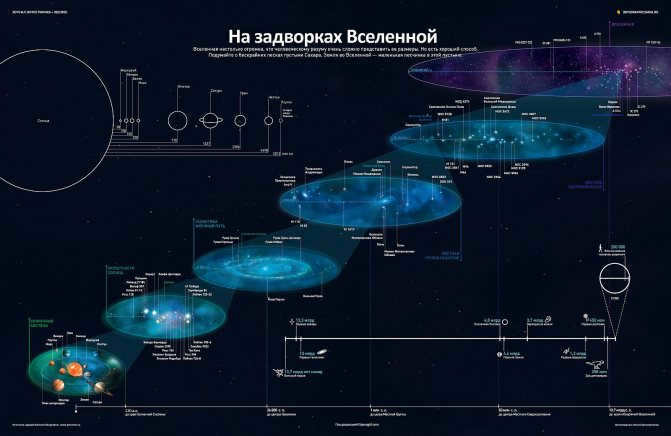
In the article about the vast structure of the Universe, you can find out the significance of these designations and get a glimpse of our home from a distance. However, there are numerous other aspects of our planet’s position in space that astronomers often overlook. And yet, as the saying goes, the devil is in the details. So, let’s explore what is right under our noses – so close that we often overlook it.
Earth’s Nearest Surroundings
The Moon is the nearest celestial body to Earth. It is situated at a distance of “merely” 384,400 kilometers, which is equivalent to 9.6 times the Earth’s equator! This is already a significant amount for a human being. The journey to the Moon, which was undertaken by astronauts, took approximately 3 days, 3 hours, and 49 minutes. In contrast, the New Horizons probe managed to reach our satellite in just 8 hours. However, it is important to bear in mind that these missions served different purposes – unlike the American astronauts who needed to decelerate for a “moon landing,” the New Horizons probe did not require such maneuvering.
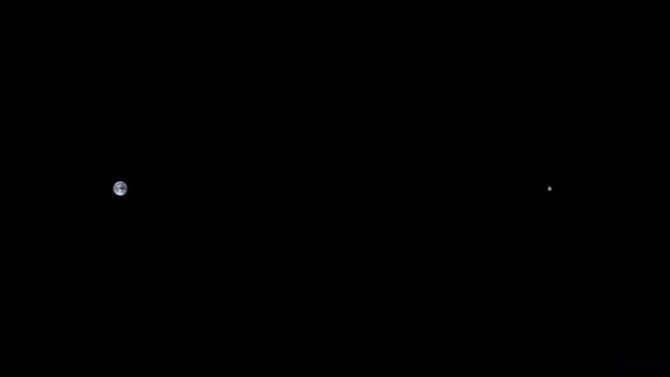
Despite the fact that the Moon is Earth’s satellite, they are situated at a considerable distance from each other.
The Moon possesses extraordinary characteristics as a satellite. Its connection with Earth was intimate and intense: the parent planet collided with our planet, dislodging a massive piece of it – thus giving birth to our Moon. Evolving alongside Earth, it acquired its distinct appearance, which has captivated mankind for over a millennium.
Are there any other natural satellites orbiting the Earth besides the Moon? In reality, there are thousands of them. Our planet is surrounded by numerous dust particles and small rocks that continue to increase in number each year. However, most readers are likely interested in larger objects – ones that are at least the size of a substantial rock, if not as large as the Moon.
Unfortunately, there are no other natural satellites of that size. The only exception is quasi-satellites – celestial bodies whose orbits closely intersect with Earth’s in certain regions of motion. The largest quasi-satellite, the asteroid Cruithne, has a circumference of 5 kilometers. Although Cruithne’s orbit around the Sun is highly elongated, bringing it close to Mercury at perihelion and Mars at aphelion, it cannot be classified as a true satellite. Nonetheless, it still maintains a close proximity to Earth and regularly alters its motion path.
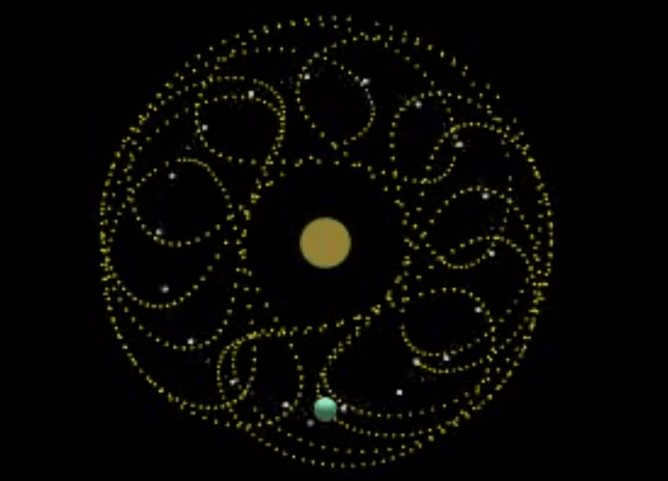
The annual motion trajectory of Cruithne
An issue with Cruithnee, along with many other quasi-satellites, is the instability of their orbits. These asteroids are not only affected by the Earth but also by other planets and celestial bodies. As a result, they may either become fully-fledged satellites of the Earth or collide with it.
The latter scenario, although unlikely, poses significant danger. The recent Chelyabinsk meteorite, which was only 17 meters in size, caused considerable destruction and incurred millions of dollars in damages. Now imagine if it were to collide with an asteroid like Cruithne. Even if it were to crash into the ocean, it would generate waves as high as 500 meters within a 600-kilometer radius. Additionally, the impact would create a rumble of 60 decibels, equivalent to the noise level of a busy road during morning rush hour, which would be audible even on the opposite side of the Earth.
Man-made Satellites
However, it is human beings who have achieved the most in populating the Earth’s orbit. Since the start of the space age on October 4, 1957, when the first artificial satellite Sputnik-1 was launched in the USSR, many years have passed – and now the Earth is surrounded by a vast cloud of over 18,000 satellites.
Near-Earth satellites serve a variety of purposes – from scientific research and communication services to orbital weaponry. However, it is important to note that an artificial satellite is generally defined as any object launched into Earth’s orbit by humans. According to this definition, Earth’s artificial satellites can be divided into two main categories: functional satellites and space debris.

An object that is capable of performing actions in orbit is classified as a satellite. This definition encompasses a wide range of devices, including orbital stations with astronauts conducting scientific experiments, as well as amateur radio installations that simply transmit signals. Currently, there are approximately 6 thousand satellites in orbit, but only around 600 of them are actively functioning. The remaining satellites are essentially space debris, serving no practical purpose.
“Beneficial” satellites
Common knowledge tells us about the existence of beneficial satellites – communication satellites, meteorological satellites, and space stations – which number in the hundreds. These satellites enable us to have telephone and internet connectivity regardless of our location, monitor the movement of air masses, and even have control over the growth of crops. Television relay and geo-navigation satellites have become an essential element of life worldwide, extending even to remote areas like Liberia in Africa, where there is a lack of power infrastructure, yet people are able to watch satellite television.
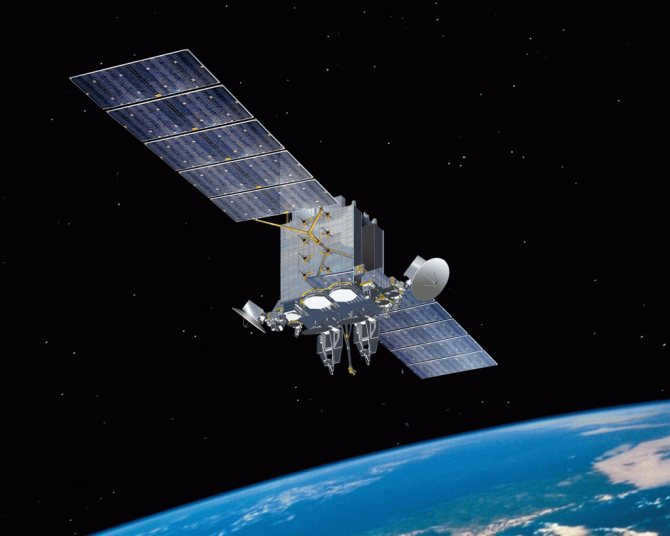
If you compare the velocity of the radio wave to the velocity of light, the typical lag time is 2-3 seconds – not crucial if you’re simply viewing a YouTube video, but problematic when you’re on a call. Therefore, when your GPS system takes a significant amount of time to acquire a signal, don’t be quick to fault the manufacturer – it is highly likely that the issue lies in the unyielding nature of the laws of physics.
Dealing with Space Debris
The issue of space debris arises from the challenges faced in the history of space exploration. Initially, both governments and private companies focused on developing technologies to launch satellites more efficiently and cost-effectively. This led to the introduction of PocketSats, which could be delivered into orbit for just $10,000. This innovation allowed individuals to have their own personal satellite communication station, comparable in cost to purchasing a new car. However, the disposal of these satellites after their useful life became a concern for space explorers. While modern orbital spacecraft are designed to reenter the atmosphere and burn up after their resources are depleted, there are still a limited number of “environmentally friendly” satellites.
Nevertheless, a significantly larger issue arises from the notorious “traditional” space debris – which includes space rocket stages, spacecraft debris, and solid dust, particularly slag from solid-fuel upper stages. In the Earth’s orbit alone, there exist over 13 thousand items of such space debris. You might argue that it’s not a significant amount, but if you examine a map depicting the distribution of space debris, it becomes evident that it forms a consistent layer around the Earth, jeopardizing the functionality of other operational satellites.
What are the odds of encountering space debris in Earth’s orbit? In reality, they are quite significant. It is even possible for two satellites to collide – for instance, the Russian military communications satellite Cosmos-2251 collided with the French mobile communications satellite Iridium-33 in 2009. Both satellites were traveling at speeds exceeding 24,000 km/s, resulting in an impact that caused the satellites to shatter into numerous fragments. Even the particles of debris from rocket engines can pose a threat – as they accumulate in fast-moving clusters, they can land on the solar panels and optical instruments of spacecraft, obstructing and causing damage. As a result, the International Space Station must frequently adjust its course to avoid these projectiles.
The mass of our planet, Earth, is not constant and currently the loss of mass is surpassing its gain. This decrease in mass leads to a reduction in Earth’s gravitational force, resulting in a weakened ability to retain its atmosphere.
The Mass of Planet Earth
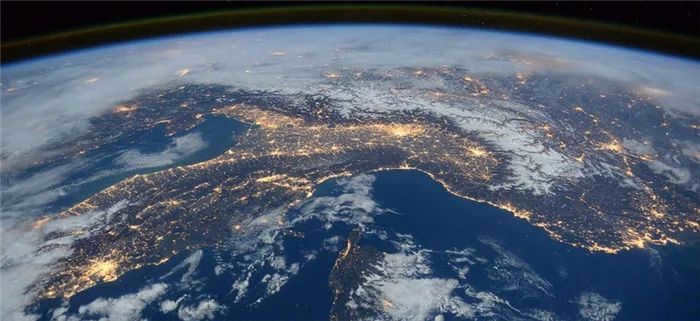

In 1798, the renowned British scientist Cavendish (1731-1811) became the first person to determine the weight of our planet. He accomplished this feat by applying Newton’s law of universal gravitation and employing a simple apparatus known as a scale. Henry Cavendish.
Henry Cavendish holds the distinction of being the first individual to gauge the weight of the Earth utilizing a torsion scale.
This scale forms the basis of contemporary gravity barometers and is exceptionally sensitive, making it a valuable tool in geological investigations.
Measurements of Planet Earth
Planet Earth is a celestial body of considerable size. Here are the various measurements of the planet:
- Polar radius – 6,357 km.
- Equatorial radius – slightly over 6,378 km.
- Polar diameter – 12,000714 km.
- Equatorial diameter – 12,757 kilometers.
- The length of the meridian, which is the circumference passing through the two poles, is 44,000 kilometers.
- The equator has a length of 40,755 kilometers.
- The total surface area of the planet is approximately 510 million square kilometers.
- About 148 million square kilometers are made up of land.
- The oceans and seas cover about 362 million square kilometers.
- The volume of the entire planet is 1,083 billion cubic kilometers.
- The Earth’s
- Rephrase the text, making it unique while keeping the HTML markup: <li></li>
</ul>

Imagine if we could fit the entire mass of the Earth into cars, each capable of holding 50 tons. The resulting train would be an astonishing 8 billion times longer than the distance between the Earth and the Sun. It is truly mind-boggling to think about the immense size and weight of our planet Earth! Weight of Planet Earth
Density of Earth
The mean density of Earth is four times greater than the mean density of the Sun and 5.5 times greater than the density of water. Certain metals discovered within Earth’s core exhibit even higher densities. For instance, platinum is 21 times denser than water. However, even platinum’s density is relatively low when compared to the densities of various celestial bodies that astound us.
The density of celestial bodies
The celestial bodies orbiting around Sirius have a density that is 40,000 times greater than that of water. When a container filled with star matter is placed on one side of a balance, it requires 15 containers on the other side to achieve equilibrium. A small star recently discovered by astronomer Kainer possesses an even more astonishing density.
The material composing this star is 10,000 times denser than platinum. A small box filled with this star matter weighs approximately 50 tons! Imagine trying to fit that box into your pocket! However, it is worth mentioning that some stars have an average density that is only 1/100th of the density of the air around us. Stars exhibit a wide range of densities.
Here’s something interesting: My personal experience with growing onions quickly on the windowsill. A guide on how to successfully plant onions at home on the windowsill.
This question was inadvertently raised when it was discovered that our planet is encompassed by the vast expanse of space. It “holds” the Earth in the abyss of the cosmos. What factors are responsible for maintaining its orbital trajectory? This question remained unresolved for an extended period of time.
For centuries, no individual could successfully unravel this enigma. Eventually, the illustrious Isaac Newton (1643-1727), a prodigious mathematician, engineer, physicist, and astronomer, unveiled the law of universal gravitation. Newton demonstrated that all entities within the cosmos are mutually attracted to one another (further reading: Law of Falling Objects).

The gravitational force between two objects is stronger when the distance between them is smaller and their masses are larger. Specifically, Newton’s laws state that every material particle attracts another material particle with a force that is directly proportional to its mass and inversely proportional to the square of the distance between them. It was Isaac Newton who discovered the universal law of gravitation.
As a result, in order to keep all the planets in their orbits, each planet, including our Earth, must have a massive mass. In fact, the mass of the Sun, which is the central body of the planetary system, is 750 times greater than the combined mass of all the planets and satellites, and 330,000 times greater than the mass of the Earth.
The Sun maintains the planets’ orbits by exerting its gravitational pull. For instance, if the Sun didn’t attract a planet towards it, a planet P moving in the PC direction would continue moving straight and uniformly (as per the law of inertia) in that direction. In the initial second, it would travel from point P to point K and ultimately exit the solar system.
In contrast, if the planets were solely attracted to the Sun, they would travel from point P to point L in the first second. However, this celestial body is not only attracted to the Sun, but also in motion, following the diagonal PA of the parallelogram formed by these movements.
As a result, at the end of the first second, the planet is not located at point K or L, but is instead moving diagonally towards point A. By applying the same line of thinking, we can deduce that in the second second, the planet moves towards point B, in the third second towards point C, and so on.
This force is what perpetually pulls our Earth and the other planets around the Sun, without any hint of vibration or oscillation, within the vast stillness of space. Many of you may have experienced the joy of playing with a rubber band and a pebble as children.
When you twist the rubber band, it remains in a stretched state, but once you stop twisting it, it contracts and the pebble moves closer to your hand.
If you suddenly pull the rubber band away from your hand, the pebbles that were attached to the rubber band will fly away. Planets experience a similar effect if the Sun suddenly stops exerting its gravitational pull on them.
Will the mass of the planet increase due to this expansion and cause the continents to move? On the other hand, by examining the continental edges of Africa, Europe, and America, one could speculate that combining them would create a single continent.
How the Concept of the Birthplace of Humanity has Evolved
In ancient times, people believed that the Earth was flat and rested on the backs of three whales (or elephants) and a giant tortoise. This perception naturally gave it a unique advantage.
During the Middle Ages, our understanding of the Earth’s shape, size, and weight gradually became more defined. After analyzing all available information, Jordano Bruno concluded that the Earth was round. Unfortunately, as a result of a controversial trial, he was burned at the stake. This notion was later confirmed by the explorer Fernando Magellan during his global expeditions.
Esosthenes, an ancient Greek scientist, was the pioneer in attempting to determine the size of the Earth. He conducted measurements of the shadow length in various Greek regions and compared the results. Based on these measurements, he established relationships and calculated their quantities.
In the 17th century, G. Galileo made significant progress in this field with the discovery of the law of free fall, followed by J. Newton, the creator of the law of universal gravitation. Objects are attracted to one another in one second.
The Scottish scientist N. Mackelin was the first to determine the weight of the Earth in tons in 1774, which amounted to 5.879 sixty billion tons. However, this value has now increased to nearly sixty million, as approximately 30 thousand tons of space dust settle on the planet each year.
There exists a degree of energy, devoid of mass
Every physical entity possesses distinct characteristics, including the ability to create gravity and possess mass. However, the inquiry into the weight of planet Earth lacks meaning. At first, this notion may appear perplexing, but it is not truly astonishing. Our planet traverses the cosmos in a state of perpetual free fall, rendering the concept of weight obsolete. Nevertheless, the quantity of substance remains constant and seemingly significant.
Dependency for determining the measure of inertia of the “house of men”
To calculate the measure of inertia for the interaction of the spheres due to gravity, we can rely on Newton’s assumption that their mass is concentrated at their center. Now, to determine the mass of the Earth, we can use Newton’s classical theory of gravitation:
F represents the force of attraction between the bodies,
G represents the gravitational constant, which has a value of 6.67408(31)-10 -11 m³/(kg-s²),
m1 and M2 represent the respective measures of inertia of the interacting bodies,
R represents the distance between the bodies.
If we imagine one amount of matter as the earth and the other as a 1 kg mass ball, their interaction would be equal to 9.8 kg × m/s 2. The radius of our home is 6.4 million meters. By substituting these values into the formula mentioned above and performing simple calculations, we arrive at a result of 6 × 10 24 kg. This represents the mass of the Earth.
Here’s something interesting: When is the ideal time to plant aubrieta for seedlings? Tips on cultivation and care. Aubrieta can be grown from seeds, but when is the best time to plant it for seedlings?
The question of what forces keep the Earth in orbit has remained unanswered for a considerable amount of time, ever since it was accidentally raised upon the realization that our planet is surrounded by space in every direction, effectively holding it in the depths of the vast expanse.
Distribution of Earth’s Mass
It is common knowledge that the composition of our planet is not uniform. Here is an estimated breakdown of the Earth’s total mass (in descending order):
- The mantle is a layer made up of iron, calcium, and magnesium silicates. Its mass is approximately 4.043 x 10^24 kg.
- The core, composed mainly of iron and nickel, weighs around 1.93 x 10^24 kg.
- The Earth’s crust, which is where humans reside, has a mass of about 0.026 x 10^24 kg.
- The hydrosphere, encompassing bodies of water, amounts to roughly 0.0014 x 10^24 kg.
- The atmosphere, consisting of gases, weighs approximately 0.0000051 x 10^24 kg.
Our planet, Earth, is the largest among the planets in the Earth group. Just to give you an idea, Mars is about 0.108 times the mass of Earth, Venus is 0.815 times, and Mercury is 0.055 times.
However, when it comes to gaseous giant planets, they are much larger and heavier than Earth. For instance, compared to Jupiter, our planet is 317.8 times lighter – and mind you, Jupiter is quite isolated in our solar system. In contrast, Saturn is 95.1 times heavier than Earth, Neptune is 17.2 times heavier, and Uranus is 14.5 times heavier.
So now we have an understanding of how much Earth actually weighs and its mass compared to the other planets in our solar system.
The problem had remained unsolved for centuries until the renowned Isaac Newton (1643-1727), an exceptional mathematician, engineer, physicist, and astronomer, unveiled the theory of universal gravitation. Newton demonstrated that all entities in the cosmos exert an attractive force on one another (learn more: Law of Falling Objects).
Understanding the Concept of “Earth’s Mass”
Not many individuals have a clear comprehension of the Earth’s mass. Upon examining its composition, it becomes evident that the planet’s surface is covered by a solid and rigid rocky crust. Below this crust lies a sturdy mantle made of rock, and at the core lies the central part of the planet. Due to the intense heat at the center, the core is comprised entirely of molten substances.
Within the scientific community, there has been considerable discussion regarding the expansion of the Earth and the movement or stability of its continents.
Does the mass of the planet increase as a consequence of this expansion and the shifting of continents? On one hand, by studying the continental boundaries of Africa, Europe, and America, one might hypothesize that combining them would yield a singular continent.
These findings are backed by mathematical research, providing clear proof of a previously united landmass. Consequently, the landmasses expanded and shifted, leading to changes in the Earth’s shape and an increase in its mass.
Additional support for this theory can be found in the similarities of the geological structures across continents. All of these inquiries can be easily addressed through the new concept of tectonic plates, which explains the expansion of oceans as a result of the submergence of continental margins.
P.S. article – What is the weight of the Earth?
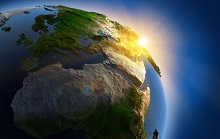
The weight of the Earth is approximately 5.976 sextillion tons on average. This enormous number is comprised of 21 decimal places, making it visually overwhelming. However, calculating the mass of our planet is a much more complex task compared to weighing a watermelon, for instance. After all, it is not possible to place an entire planet on a scale! Therefore, determining the weight of the Earth has been a long-standing challenge for scientists that took centuries to solve.
In ancient times, people had their own ideas about the size, shape, and mass of the Earth. According to ancient beliefs, the Earth was thought to be a hemisphere or a “flat plate” resting on three whales and a giant turtle, forming the foundation of the universe. Alternatively, elephants were sometimes thought to support the Earth. Regardless, there was a widespread consensus in ancient times that the Earth was flat and had an edge.
During the Middle Ages, there were significant advancements in understanding the shape and weight of the Earth. Giordano Bruno, who was later burned at the stake by the Inquisition for his beliefs, discovered that the Earth is spherical. Another important contribution to Earth science was made by the explorer Magellan, who proved through practical observation that the Earth is round.
Initial findings on the weight of our planet Earth
Indeed, our planet Earth possesses physical characteristics, with weight being among its primary attributes. This realization by medieval scholars sparked a cascade of scientific explorations and revelations. Hence, the question arises: What is the weight of our Earth? In accordance with the principles of physics, weight represents the force exerted by an object on a supporting surface. Nevertheless, the Earth lacks a physical support in the traditional sense. Consequently, the Earth can be deemed weightless. However, it does possess mass, and what an immense mass it possesses!
What is the weight of the Earth in kilograms?
In an attempt to determine the size of the Earth, the ancient Greek scientist Eratosthenes employed a unique method. By measuring the shadow of a stick in different cities of Greece and comparing the results, Eratosthenes was able to derive a formula for calculating the volume of the Earth.
Isn’t this fascinating?
Following in Eratosthenes’ footsteps, the renowned Italian physicist, mechanic, and astronomer Galileo Galilei made a groundbreaking discovery in the 17th century: the law of free fall. Continuing the legacy of great scientific breakthroughs, Isaac Newton introduced the world to the law of gravity. According to this law, the force of attraction between two bodies is directly proportional to their mass and inversely proportional to the square of the distance between them.
Now the only thing remaining is to utilize the formulas and compute the Earth’s weight. In 1774, Scottish Dr. N. Makelin determined the mass of the Earth for the first time. Based on the calculations, the planet’s mass was 5.879 sextillion tons. However, presently, this value has slightly increased to 5.976 sextillion tons.
The weight of the Earth is approximately 5.976 sextillion tons.
Nevertheless, these discrepancies do not serve as evidence of inaccuracies in the calculations made by the medieval scientist. On the contrary, these measurements are astonishingly precise, and the discrepancy can be attributed to the continuous growth in the Earth’s mass caused by the accumulation of cosmic dust. Every year, the Earth becomes heavier by around 30,000 tons!
Incidentally, employing the principle of gravity, it is possible to easily determine the Earth’s weight. We suspend a diminutive weight from a thread and record its precise position. Adjacent to it, we position a ton of lead. The gravitational pull between the two entities will cause the small weight to shift ever so slightly – less than 0.00002 mm. Although this value is minuscule, it can be utilized to ascertain the Earth’s mass. Merely by measuring the force of the Earth’s gravity acting upon the weight and the force of attraction exerted by the small weight towards the lead, it is feasible to compute the Earth’s mass based on the relative disparity obtained.
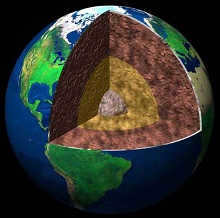
It is common knowledge that the composition of our planet is diverse. Thus, here is an estimated breakdown of the Earth’s total mass (in descending order):
- The mantle is a layer made up of iron, calcium, and magnesium silicates. Its mass is approximately 4.043 x 10 24 kg.
- The core, which consists primarily of iron and nickel, weighs around 1.93 x 10 24 kg.
- The Earth’s crust, where humans reside, has a mass of approximately 0.026 x 10 24 kg.
- The hydrosphere, which encompasses all the water on Earth, accounts for about 0.0014 x 10 24 kg.
- The atmosphere, composed of various gases, weighs roughly 0.0000051 x 10 24 kg.
What is the weight of the Earth compared to other planets?
Among the Earth-group planets, our Earth is the largest. For instance, Mars weighs about 0.108 times the weight of Earth, Venus weighs 0.815 times, and Mercury weighs 0.055 times.
However, the gas giant planets are significantly larger and equally heavy compared to Earth. If we consider Jupiter, our planet is 317.8 times lighter in weight – although it is not close in weight to any other inhabitant of the solar system. Just for comparison, Saturn is 95.1 times heavier than Earth, Neptune is 17.2 times, and Uranus is 14.5 times.
Now we have a clear understanding of the weight of the Earth and its weight ratio compared to other planets in the solar system.
Determining the Earth’s Mass
Throughout history, there has been a curiosity surrounding the size, shape, and weight of our home planet. Humans have longed to know the exact mass of the Earth, but the task proved to be quite challenging. It required extensive time and effort to accurately measure the Earth’s weight.
Evolution of Perspectives on the Birthplace of Humanity
In ancient times, there was a belief that the Earth was flat and rested on the backs of three elephants and a giant turtle. This perception inherently gave the Earth physical boundaries.
During the Middle Ages, there was a gradual understanding of the Earth’s shape, size, and weight. Giordano Bruno, despite being burned at the stake by the Inquisition for his beliefs, consolidated all available information to establish that the Earth was round. This assertion was later confirmed by Fernan Magellan’s circumnavigation of the globe.
Erastostosthenes, an Ancient Greek scientist, was the first to attempt to determine the size of our human habitat. He measured the length of the shadow cast by a pole in various Greek cities and compared the results. Based on these findings, he derived a formula to calculate the Earth’s volume.
During the 17th century, Galileo Galilei made significant contributions to this field by discovering the law of free fall, while I. Newton formulated the law of gravity, which enabled the calculation of the force between two objects.
In 1774, the Scottish scientist N. Macklin became the first to determine the weight of the Earth in tons, which was found to be 5.879 sextillion tons. However, this value has since increased to nearly 6 sextillion due to the accumulation of cosmic dust on the planet, estimated to be up to 30 thousand tons annually.
All objects in the physical world possess unique characteristics, including the force of gravity they generate and their weight. The query of the Earth’s weight may appear nonsensical at first glance, but upon closer examination, it is not as far-fetched as it seems. Our planet gracefully floats through space in a state of perpetual free fall, rendering the concept of weight essentially meaningless. However, the sheer mass of the Earth remains constant and is undeniably substantial.
The most straightforward method to determine the mass of the Earth is by utilizing the principle of gravitational dependence. A lightweight object is suspended on a string, while a significantly heavier object is introduced nearby. In accordance with Newton’s law, the light object will deviate from the vertical position and the distance between the two objects will decrease slightly. By measuring this reduction, we can calculate the gravitational force exerted by the Earth, as the acceleration due to gravity on the planet is already known to be 9.81 m/sec^2.
Calculation of the inertia measure of the “house of people”
To determine the inertia measure of the “house of people”, we can rely on Newton’s theory of gravitation which assumes that the substance of the spheres is concentrated in their centers. In this case, we can calculate the mass of the Earth using the following formula:
F represents the force of mutual attraction between bodies;
G is the gravitational constant, which is equal to 6.67408(31)-10 -11 m³/(kg-s²);
m1 and m2 represent the measures of inertia for the interacting bodies;
R is the distance between the bodies.
If we consider the Earth as one amount of matter and a 1 kg ball as the other, their interaction can be expressed as 9.8 kg × m/sec 2 . The radius of our planet is approximately 6.4 million meters. By plugging these values into the provided formula and performing straightforward calculations, we obtain a result of 6 × 10 24 kg. This represents the mass of the Earth.
The weight of the “human habitat”: distribution and comparison with other planets
The total energy of our planet is divided among its parts in the following descending order:
- mantle (a layer of iron, calcium, and magnesium silicates) – 4.043 × 10 24 kg;
- the core, made up of iron and nickel, 1.93 × 10 24 kg;
- the upper layer or crust of the Earth – 0.026 × 10 24 kg;
- the oceans and seas (hydrosphere) – 0.0014 × 10 24 kg;
- the air layer (atmosphere) – 0.0000051 x 10 24 kg.
The Earth’s mass is approximately 6 sextillion tons and appears immense when compared to the structures and mountains on its surface. It also appears massive in relation to the other planets in the Earth’s group. Mars has an inertia measurement of only 10.8% of the Earth’s, Venus – 81.5%, and Mercury – 5.5%.
However, when compared to Jupiter, which is 317.8 times more massive than the “cradle of mankind,” the Earth becomes quite small. Saturn surpasses “our home” in terms of matter by 95 times, Neptune by 17 times, and Uranus by 14.5 times. “The abode of men” can be considered quite minuscule in comparison to the Sun, which has a substance 330 thousand times greater than that of the Earth.
What is the weight of the Earth in tons?
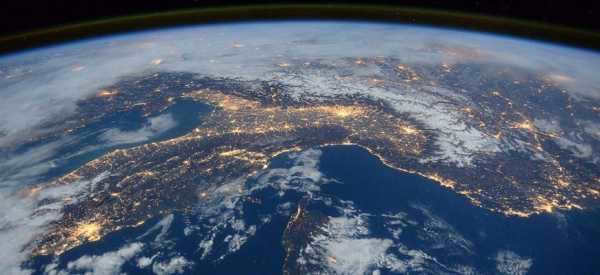
The Earth
Throughout history, humans have had a fascination with the size, shape, and weight of their home. They have always desired to determine its weight, but this proved to be a challenging task. It required significant time and effort to accurately measure the weight of the Earth.
Evolution of beliefs about the birthplace of humanity
In ancient times, people perceived the planet they inhabited as a flat surface resting on the backs of three whales (elephants) and a massive turtle. This belief inherently ascribed physical boundaries to the Earth.
Erastostosthenes, an ancient Greek scientist, was the first to attempt to determine the size of the Earth. He measured the length of the shadow cast by a pole in different Greek cities and compared the results. Based on these measurements, he deduced a relationship and calculated the Earth’s volume.
G. Galileo made significant advancements in this field during the 17th century with his discovery of the law of free fall. I. Newton, the author of the law of gravitation, also made important contributions by allowing for the calculation of the force of attraction between two objects.
In 1774, N. Makelin, a scientist from Scotland, determined that the weight of the Earth is approximately 5.879 sextillion tons. However, this value has since increased to nearly 6 sextillion tons due to the accumulation of cosmic dust, which amounts to up to 30 thousand tons on Earth each year.
There is a quantifiable amount of energy, but no measure of mass
All tangible entities possess distinct characteristics, including gravitational influence and mass. The inquiry: what is the weight of planet Earth, lacks coherence. At first glance, this notion may appear peculiar, but it is not illogical. Our celestial body navigates the cosmos in a state of perpetual free fall, thereby negating the concept of weight. However, its substantial quantity of matter remains constant and perpetually present.
One method for determining the mass of the Earth is by utilizing gravitational dependence. To do this, a lightweight object is hung on a string and a heavy object is positioned nearby. As per Newton’s law, the lightweight object will deviate from its vertical position and the distance between the two objects will decrease slightly. By measuring this decrease, we can calculate the gravitational force exerted by the Earth, as the acceleration due to gravity on Earth is already known to be 9.81 m/sec2.
Dependence for calculating the measure of inertia of the “house of people”
According to Newton’s theory of gravitation, we can assume that the substance of the spheres is concentrated in their centers when considering their gravitational interaction. Now, we can determine the mass of the Earth by applying Newton’s classical theory of gravitation:
F represents the force of mutual attraction between the bodies;
G is the gravitational constant, which is equal to 6.67408(31) x 10^-11 m³/(kg·s²);
m1 and m2 are the measures of inertia of the interacting bodies;
R denotes the distance between the bodies.
The weight of the “human abode”: distribution and comparison with other planets
The overall energy of our planet is allocated among its components in a descending order as follows:
- mantle (a layer of iron, calcium, and magnesium silicates) – 4.043 × 1024 kg;
- the core, made up of iron and nickel, 1.93 × 1024 kg;
- the upper layer or crust of the Earth – 0.026 × 1024 kg;
- oceans and seas (hydrosphere) – 0.0014 × 1024 kg;
- atmospheric envelope (atmosphere) – 0.0000051 x 1024 kg.
The Earth’s mass is approximately 6 sextillion tons and appears incredibly large in comparison to the visible structures on its surface such as buildings and mountains. It also appears significantly larger than the other planets in the Earth group. Mars, for example, has only 10.8% of the Earth’s inertia, Venus has 81.5%, and Mercury has 5.5%.
However, when compared to Jupiter, the “cradle of mankind,” the Earth becomes quite small. Jupiter is 317.8 times heavier than our home planet. Saturn surpasses Earth in terms of matter by 95 times, Neptune by 17 times, and Uranus by 14.5 times. In comparison to the Sun, which has a substance 330 thousand times greater than the Earth’s, the “abode of men” can be considered quite minuscule.
What is the weight of planet Earth?
Have you ever pondered what the Earth’s mass and weight are, and if they can be computed? Naturally, every physical object possesses a distinct set of properties and characteristics. And undoubtedly, any planet, as an astronomical entity, is not devoid of them.
Indeed, early attempts to ascertain the properties, species, and features of the Earth were made in ancient times. For instance, one of the pioneering scholars who dedicated themselves to investigating such matters was Eratosthenes, an ancient Greek mathematician. He computed the planet’s size and volume and crafted a world map. While his work made a tremendous contribution to our comprehension of the world around us, it was merely the genesis of exploration.
However, you and I reside in a modern era where much has been unraveled. Certainly, our perspective differs from that of antiquity. What do we know, or more precisely, what is presently understood about the Earth’s mass?
Here are a few intriguing pieces of information:
- Firstly, scientists have determined the exact mass of the Earth, which is equivalent to 5.97×10 ²⁴ kg;
- Secondly, the Moon’s mass is 81 times smaller than that of our planet;
- Thirdly, the weight of the Earth is constantly fluctuating.
Distribution of the Earth’s mass
Undoubtedly, the weight of any object is not uniform, especially if it is composed of different substances. However, even in the case of a homogeneous body, there can be some exceptions.
As we all know, the Earth is made up of various components such as the core, mantle, crust, hydrosphere, and atmosphere. It is safe to assume that each component has a different weight.
Let’s examine the distribution of mass on Earth.
The mantle, or outer shell, is the heaviest part with a weight of 4.043×10²⁴ kilograms.
The core, or more precisely, its mass, amounts to 1.93×10²⁴ kg.
The crust, which is the Earth’s surface, weighs around 0.026×10²⁴ kg.
On the other hand, the atmosphere has a mass of approximately 0.0000051×10²⁴ kg.
What causes fluctuations in Earth’s mass?
The mass of our planet is not a fixed quantity, as it is subject to various influences.
One factor that contributes to changes in Earth’s mass is the accumulation of space objects and substances. These can be anything from space dust and meteors to comets and other particles that enter our planet’s atmosphere and settle on its surface. As a result, the Earth’s mass increases by an average of 40,000 tons each year.
However, there are certain occurrences in the world around us that have the opposite effect and actually decrease the weight index of the planet. For instance, the Earth’s atmosphere loses gases, as they escape into outer space. This phenomenon is a result of the increased thermal motion of molecules. In fact, the heating of the Earth, which is connected to human activities and global warming, also contributes to the release of substances from the atmosphere. Additionally, artificial satellites that are sent into space do not return to the Earth’s orbit, further impacting the overall mass.
Consequently, the reduction in the weight and mass of the planet leads to a decrease in the Earth’s gravitational force. This means that the planet’s ability to retain particles and substances in the atmosphere is weakened.
How the Earth’s weight compares to other planets
In the group of planets that includes Earth, our home planet is the largest. Compared to Earth, Venus weighs about 0.815 times as much, Mercury weighs about 0.055 times as much, and Mars weighs about 0.108 times as much.
Gas planets, on the other hand, greatly outweigh us in terms of weight. Uranus is about 14.5 times heavier, Neptune is about 17.2 times heavier, and Saturn is about 95.1 times heavier. However, they are all far behind Jupiter, which is the clear winner in this category. Jupiter weighs an astonishing 317.8 times more than Earth!
It’s not possible to measure the weight of a planet. Because we can’t place it onto a scale. However, our scientists don’t need to. The impossible becomes possible…
Studying and exploring our own home is more than just a curiosity and a principle. One could argue that it is a form of obligation. Because from knowledge comes understanding, and understanding is crucial for everything that surrounds us. This understanding is vital for the preservation and sustenance of life.
There isn’t a divine creator, but there exists a cosmos that produces suns, planets, and living beings: there isn’t an all-powerful god, but there is the Universe, which governs the destiny of all celestial bodies and their inhabitants.
Konstantin Eduardovich Tsiolkovsky
The weight of the Earth is approximately 5.976 sextillion tons, which is an enormous number with 21 decimal places. Just imagining all those zeros can make your eyes water! However, determining the Earth’s mass is not as simple as weighing a watermelon. We can’t just put the whole planet on a scale! So, how do scientists calculate the weight of the Earth? It took many centuries for them to find the answer to this question.
Exploring the Earth’s Parameters: A Brief History
In the early days of human civilization, there existed various notions regarding the dimensions, form, and mass of our planet. According to the ancient belief, the Earth took on the shape of a hemisphere, akin to a “flat plate,” which rested upon three whales and an enormous turtle positioned at the foundation of this cosmic pyramid. Alternatively, elephants were sometimes considered as substitutes for whales. Regardless, it was widely accepted in ancient times that the Earth was flat and possessed a distinct edge.
The Initial Revelations on the Weight of Our Planet Earth
Consequently, the Earth represents a physical entity that possesses distinct characteristics, with weight being its primary attribute. This revelation made by scientists during the medieval period led to an array of scientific breakthroughs and investigations. Hence, the question arises: how much does our planet Earth actually weigh? In accordance with the principles of physics, weight denotes the force exerted by a body on a supportive surface. Nevertheless, the Earth lacks a physical support in the conventional sense. As a result, it can be deduced that the Earth does not possess weight. However, it does possess mass, and what an extraordinary mass it is!
What is the weight of the Earth in kilograms?
Erastosthenes, an ancient Greek scientist, was the first to attempt to determine the size of the Earth. He used a stick to measure the shadow of various cities in Greece and compared the results, which allowed him to develop a formula for calculating the Earth’s volume.
These pages provide information on the weight of various objects, including:
The weight of a cloud
The weight of a tank
The weight of a brain
The weight of an egg
Weight Calculator
Next in line was the renowned Italian physicist, mechanic, and astronomer Galileo Galilei, who made a groundbreaking discovery in the 17th century – the law of free fall. Continuing the legacy of great discoveries, Isaac Newton introduced the world to the law of gravity. According to this law, the force of attraction between two objects is directly proportional to their mass and inversely proportional to the square of the distance separating them.
Now, armed with these formulas, we can calculate the weight of the Earth. The Scottish scientist Dr. N. Makelin was the first to determine the mass of the Earth in 1774. According to his calculations, the mass of the planet was 5.879 sextillion tons. However, this figure has slightly increased to 5.976 sextillion tons in recent times.
The weight of the Earth is approximately 5.976 sextillion tons.
Nevertheless, these inconsistencies do not provide any proof of errors in the calculations made by the medieval scientist. Conversely, these measurements are remarkable in their precision, and the inconsistency can be attributed to the continuous accumulation of cosmic dust, which leads to a constant increase in the Earth’s mass. Approximately 30,000 tons are added to the Earth’s weight every year!
Distribution of the Earth’s mass
The Earth’s mass is distributed unevenly across its surface. This uneven distribution is due to a variety of factors, including the presence of mountains, oceans, and other geological features. The distribution of mass also affects the Earth’s gravitational field, which is stronger in areas with higher mass concentrations.
One way to visualize the distribution of the Earth’s mass is through the use of gravity maps. These maps show variations in the gravitational field strength across the Earth’s surface, which can be used to infer the distribution of mass.
Another way to understand the distribution of mass is through the study of Earth’s interior structure. By examining seismic waves and studying the behavior of different materials under high pressure and temperature conditions, scientists can gain insights into the composition and density of the Earth’s interior.
Overall, the distribution of the Earth’s mass is a complex and dynamic process, influenced by a variety of factors. Understanding this distribution is crucial for studying the Earth’s geology, as well as for practical applications such as satellite orbits and navigation systems.
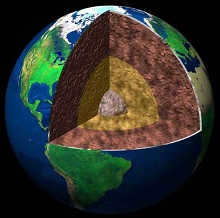
It is common knowledge that our planet, Earth, possesses a diverse composition. Therefore, let me present to you an estimation of the Earth’s total mass distribution (in descending order):
- The mantle, a layer composed of silicates of iron, calcium, and magnesium, accounts for a mass of approximately 4.043 x 10 24 kg.
- The core, predominantly composed of iron and nickel, has a mass of approximately 1.93 x 10 24 kg.
- The Earth’s crust, which serves as the habitat for mankind, has a mass of approximately 0.026 x 10 24 kg.
- The hydrosphere, encompassing Earth’s water bodies, accounts for a mass of approximately 0.0014 x 10 24 kg.
- The atmosphere, surrounding the Earth, has a mass of approximately 0.0000051 x 10 24 kg.
What is the weight of the Earth in comparison to other planets?
Among the Earth-group planets, our Earth is the largest in size. For instance, Mars weighs approximately 0.108 times the weight of Earth, Venus – 0.815 times, and Mercury – 0.055 times.
However, the gas giant planets are significantly bigger and heavier than Earth. If we compare it to Jupiter, our planet is 317.8 times lighter, but Jupiter is far more massive than any other planet in the solar system. To put it into perspective, Saturn is 95.1 times heavier than Earth, Neptune – 17.2 times, and Uranus – 14.5 times.
So now we have an idea of the weight of the Earth and how it compares to other planets in the solar system.
By considering the Earth’s orbit as a circle, we can determine the mass of the Sun by observing the Earth’s gravitational force towards it. This force acts as a centripetal force that keeps the Earth in its orbit.
To find the mass of the Sun, we need the mass of the Earth and the average distance between the Earth and the Sun. Let’s denote the duration of a year in seconds as . Using this information, we can calculate the mass of the Sun:
Using the same formula, we can also calculate the mass of any planet with a satellite. This requires knowing the average distance between the satellite and the planet, the time it takes for the satellite to orbit the planet, and the mass of the planet. For example, we can determine the mass of the Earth by using the distance between the Moon and the Earth and the number of seconds in a month.
The weight of any object can be determined by comparing it to the gravitational force it exerts on the Earth. However, when considering objects that are involved in the Earth’s daily rotation, we must also account for the centripetal acceleration they experience. This correction can be avoided by using the acceleration of gravity observed at the Earth’s poles when calculating its mass. Let’s denote the average radius of the Earth as R and its mass as M:
If we denote the average density of the Earth as D and its average radius as R, then it follows that the average density of the Earth is given by:
The average density of the mineral rocks in the upper layers of the Earth is approximately This implies that the density of the Earth’s core must be significantly higher.
Lejeandre initially studied the Earth’s density at different depths, and this research has been continued by numerous scientists. According to the findings of Gutenberg and Gaalk (1924), the Earth’s density varies at different depths:
The pressure within the Earth’s interior at great depths is seemingly immense. Many geophysicists believe that at certain depths, the pressure could reach atmospheres per square centimeter. In the Earth’s core, which is located around 3000 kilometers or more below the surface, the pressure is estimated to reach 1-2 million atmospheres.
Figure 50. Comparison of the sizes of the sun and the planets.
The complete theory of the motion of the planets, as explained in celestial mechanics, allows for the determination of a planet’s mass based on observations of its influence on the motion of another planet. In the early 19th century, scientists were aware of the existence of Mercury, Venus, Earth, Mars, Jupiter, Saturn, and Uranus. However, they noticed irregularities in the motion of Uranus, leading them to suspect the presence of an undiscovered planet exerting gravitational influence on Uranus. In 1845, the French scientist Leverrier and the Englishman Adams independently conducted calculations to determine the mass and location of this hypothetical planet. Subsequently, a planet was observed in the sky exactly where the calculations predicted, and it was named Neptune.
In 1914, Lovell, an astronomer, made a similar prediction about the existence of another planet located even further from the Sun than Neptune. However, it wasn’t until 1930 that this planet was actually discovered and given the name Pluto.
The table provided below presents some basic information about the nine large planets that can be found in our solar system. To give you a visual representation, Figure 50 displays the relative sizes of both the Sun and these planets.
While we have listed the large planets, it’s worth noting that there are also approximately 1,300 very small planets known as asteroids (or planetoids). These asteroids mainly orbit between Mars and Jupiter.
If you’re curious about the mass of the Earth, which is the third planet in our solar system, let’s find out! We’ll provide a detailed description of the calculation formula, the equation with its components, and the final result of the Earth’s mass.
And the mass of the Earth is approximately 5.9736 x 10^24 kg. Isn’t that incredible?
How can we determine the mass of the Earth?
But what is even more fascinating is the method used to calculate the Earth’s mass in the first place. It all comes down to the gravitational force that our planet exerts on objects nearby.
According to the laws of physics, any object with mass attracts other objects towards it. If you place two billiard balls next to each other, they will be drawn towards one another. Although this force is invisible to the naked eye, sensitive instruments can detect it. By measuring this force, we can deduce the masses of both objects.
Sir Isaac Newton proposed that the mass of spherical objects is concentrated at their centers. Using this assumption, we can apply the following equation:
- F represents the gravitational force between the objects.
- G is a constant equal to 6.67259 × 10-11 m3/kg s2.
- M1 and M2 are the masses of the objects attracting each other.
- R is the distance between the objects.
It is worth noting that it is proper to utilize the term “mass” rather than “weight” in the inquiry, as the latter notion serves as the force necessary to compute the gravitational field. You can take a ball and measure its weight on both the Earth and the Moon, and the reading will differ. However, mass remains a consistent value, and the mass of the Earth remains constant.
It may seem significant, but we mustn’t overlook the fact that there are larger entities in our system. For instance, our star surpasses the mass of the Earth by 330,000 times, and Jupiter by 318 times. There are also smaller entities, of course. For example, the mass of Mars is only 11% of the Earth’s mass.
We are fortunate to have the highest planetary density in the solar system – 5.52 g/cm 3 . This figure is attributed to the presence of a metallic core, surrounded by a layer of rocky mantle. In contrast, less dense planets like Jupiter consist mainly of hydrogen and other gases. This knowledge provides insight into the Earth’s mass.
The planet Earth is home to billions of people, who often overlook the many fascinating and unique aspects of our world. Interesting facts about our planet are often introduced in school lessons on geography, astronomy, and physics. However, these facts tend to fade from memory over time, and as new information emerges, new facts come to light. It is important to continually learn about the planet Earth, not only for the comfort and well-being of our current generations, but also to ensure its preservation for future generations.
Countless researchers dedicate themselves to studying the Earth, eagerly sharing their wealth of knowledge.
Without a doubt, the Earth boasts an array of intriguing facts:
The Sun, while not the largest star in terms of size, still dwarfs the Earth by a factor of nearly 1.5 million.
Similar to the Moon, the Earth experiences phases.
A mere teaspoon of soil contains an abundance of tiny organisms, outnumbering the Earth’s population.
In a time before the existence of trees, gigantic fungi reigned supreme on the planet.
The galaxy is home to at least 2 billion planets resembling Earth.
Within the Earth lies a core that rivals the Sun’s scorching temperature.

There are numerous fascinating facts about our planet that many people are not aware of. Therefore, I would like to delve into them and provide more details. One particular example is the unique ability of water on Earth to exist in liquid, solid, and gaseous forms, which is not found on any other planet.
The velocity of the Earth
In order to complete one full revolution around the center of the solar system, the Earth requires a total of 365 days, 5 hours, 48 minutes, and 46 seconds, which is known as an astronomical year. However, for the sake of convenience, a calendar year is considered to be 365 days, and the additional time is “accumulated” and results in an extra day being added to each leap year. The Earth travels an orbital distance of approximately 942 million kilometers. Based on calculations, the velocity of the Earth is approximately 30 kilometers per second or 107,000 kilometers per hour.
The mass of the Earth is a constantly changing quantity that is relatively relative. The Earth’s mass is approximately 5.97219 × 10^24 kg. It undergoes fluctuations due to various factors such as the deposition of cosmic dust on its surface, meteorite impacts, and other factors. These contribute to an annual increase in mass of about 40,000 tons. However, the Earth also loses mass due to the dispersion of gases into outer space, resulting in a decrease of approximately 100,000 tons per year.
Surface area of Earth
The total surface area of Earth is 510,072,000 square kilometers, with water covering 361,132,000 square kilometers, which accounts for 70.8% of the Earth’s surface. The remaining land area is 148,940,000 square kilometers, making up 29.2% of the Earth’s surface area. Considering the extensive coverage of water on our planet, it would have been more fitting to name it Water.
The Earth’s volume is approximately 10.8321 x 1011 cubic kilometers.
Tectonic plates
The Earth’s crust is divided into specific regions known as tectonic plates. These plates are situated on top of the molten interior and possess the ability to move and shift, with one plate sliding beneath another. This process plays a crucial role in the carbon cycle, enabling the atmosphere to eliminate carbon dioxide that is generated by the decay of microorganisms and marine plants. When these organisms perish, they release carbon, which then sinks to the ocean floor, travels to the depths, and eventually resurfaces. Consequently, the movement of tectonic plates functions as a mechanism for carbon recycling. This process helps regulate the planet’s temperature and prevents the buildup of greenhouse gases, thus safeguarding the Earth from overheating.
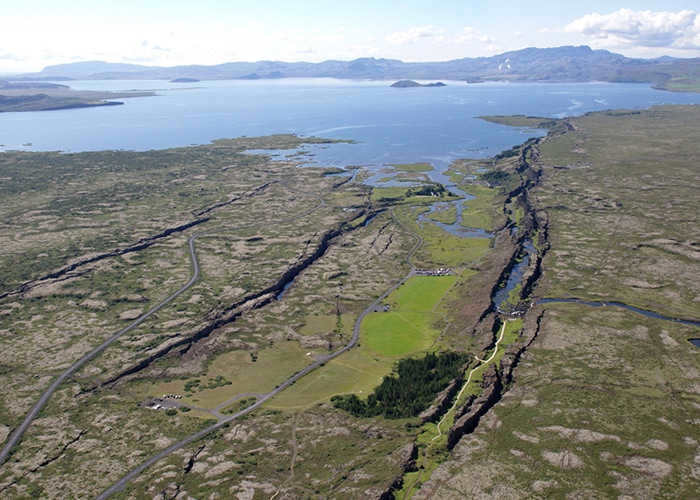
It is common knowledge that the movement of tectonic plates serves as a vital indication of life on Earth. However, for humans, the cessation of earthquakes would be seen as a negative sign. The movement of these plates also has an impact on volcanic eruptions and the formation of mountains, further substantiating the existence of massive continents that have undergone continuous reshaping and reconfiguration over time.
What is particularly intriguing is that this process is ongoing, with the plates of the lithosphere shifting a few centimeters each year. This suggests that a future day will witness the birth of a new continent.
A multitude of astonishing facts about our planet Earth can be presented. Yet, even scientists occasionally struggle to provide explanations for various phenomena that occur.

Scientists today attribute the occurrence of “earth tremors” to the collision of tectonic plates. And there exist numerous fascinating details connected to this phenomenon. For instance, it is notable that:
on a daily basis, 8,000 earthquakes take place without human awareness;
500,000 earthquakes transpire on Earth annually;
earthquakes of such devastating magnitude are infrequent occurrences.
The Earth is not perfectly spherical
The commonly held belief that the Earth is completely round is not entirely accurate. In reality, the shape of our planet is more akin to a flattened spheroid. This means that the radius of the Earth along the equator is slightly larger than it is from pole to pole. An intriguing fact to note is that while Mount Everest holds the title for being the highest mountain, it is not the point farthest from the center of the Earth. That distinction belongs to a mountain in Ecuador called Chimborazo.

Water and Atmosphere
The reason why Earth is known as the Blue Planet is not because of the blue skies that humans observe. This name was given after astronauts witnessed a breathtaking sight from space. They observed that only 30% of the Earth is visible above the sea level, while the remaining 70% is covered by the vast blue ocean. It is a little-known fact that a whopping 75% of the Earth’s atmosphere, which sustains all forms of life, exists within the first 10 kilometers above the planet’s surface.
Magnetic Field
The Earth is essentially a massive magnet, with its magnetic poles located near the geographic poles at the top and bottom of the planet. These poles give rise to the magnetic field, also known as the magnetosphere, which extends for thousands of kilometers into space. This magnetic field serves as a protective shield, safeguarding all life on Earth from harmful radiation and other potential dangers. While most people are aware of the Earth’s natural satellite, the Moon, few are familiar with the existence of two smaller asteroids, each following its own unique path.
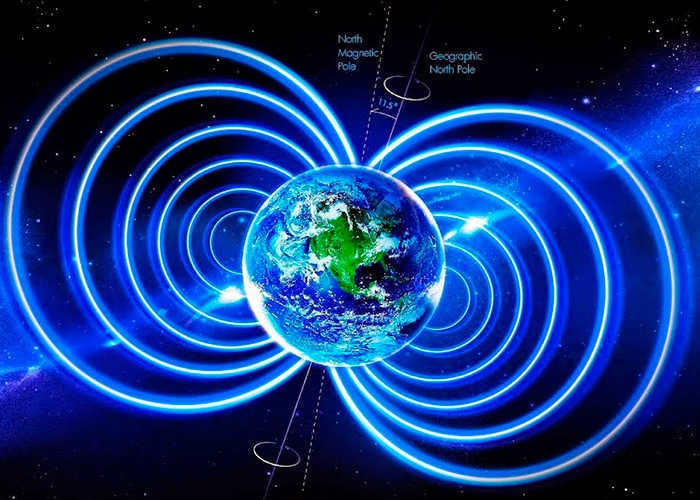
Extraordinary Earth
Uncovering all the mysteries, all the fascinating details about the magnificent planet is an impossible feat. It is widely known that this is the sole location in the vast universe where life exists. The Earth’s crust contains an abundant amount of oxygen, while its core is comprised of 88% iron, which, when in its liquid state, generates the planet’s magnetic field. As a consequence of global warming, the level of the Earth’s oceans is gradually increasing. This fact should be a cause for concern among individuals, and it is highly probable that the balance between land and water will need to be reassessed in the near future.
Rocks
There is an intriguing phenomenon involving the movement of rocks in California that is unrelated to tectonic processes. What makes it even more fascinating is that these stones in Death Valley have the ability to move on their own, leaving distinct traces on the surface of the dry lake. Scientists have been studying this phenomenon for a long time, yet they still cannot provide a definitive explanation for it. While there are no direct witnesses to the rocks “walking,” over the course of the past seven years, these stones have managed to cover a distance of 200 meters. Interestingly, their movement seems to be particularly swift during the winter months.
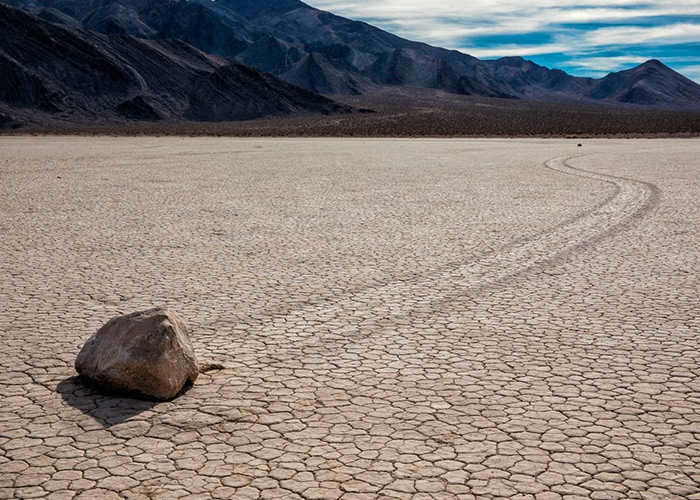
Continuing the discussion on fascinating facts about peculiar rocks, it is worth mentioning the trovantes in Romania. According to locals, these stones reproduce like cacti. A protuberance appears on the smooth surface of a round boulder, which then separates slightly and starts growing rapidly. Similar phenomena are also observed with stones growing directly from the ground in Russia. People regard these unexplained occurrences with great respect, believing that touching such stones can bring good health and strength.
When considering moving stones, one cannot ignore the hypothesis of the Earth’s magnetic field. Scientists have begun studying volcanic lava, but there are still more questions than answers.
There is an infinite number of fascinating facts about our planet that can be listed. Each day, new discoveries and insights arise that were previously unimagined. However, with the emergence of advanced technologies, scientific advancements, and a better understanding of natural processes, we now have greater opportunities to acquire useful knowledge and demystify what was once considered mysterious.
Earth is an exceptional planet within our solar system. It is not the smallest, nor is it the largest—it holds the fifth position in terms of size. Among the planets in the Earth group, it reigns supreme in terms of mass, diameter, and density. This celestial body resides in the vast expanse of outer space, making it difficult to determine its weight. Placing it on a scale is out of the question, so its weight is calculated by adding up the masses of all the substances comprising it. This sum roughly equates to 5.9 sextillion tons. To grasp the enormity of this figure, one can simply write it down mathematically: 5 900 000 000 000 000 000 000. A number of zeros that vast is enough to make one’s eyes well up with tears.
The quest to determine the magnitude of the planet throughout history
Throughout the ages and across various cultures, scientists have embarked on a quest to uncover the weight of planet Earth. In ancient times, it was believed that the Earth was a flat surface supported by enormous whales or turtles. Some civilizations even hypothesized that elephants played this crucial role instead of marine creatures. Regardless, the prevailing perception across different societies was that the Earth possessed a flat shape and had a definitive edge.
As the Middle Ages dawned, new ideas about the Earth’s shape and weight emerged. One notable figure who championed the concept of a spherical Earth was G. Bruno, although he faced persecution from the Inquisition for his revolutionary beliefs. Another significant contribution to this field came from the intrepid explorer Magellan, who proposed the notion of a round planet and provided insights into its radius and mass.
The Earth is a physical entity with specific characteristics, including its weight. This finding has paved the way for extensive research. According to the principles of physics, weight is determined by the force exerted by an object on its support. Considering that the Earth lacks any support, it can be inferred that it does not possess weight. However, it does possess a substantial mass.
The Mass of Earth
An ancient Greek scientist, Eratosthenes, was the first to attempt to determine the size of the planet. He carried out measurements of shadows in different cities of Greece and compared the data to calculate the volume of the Earth. Following him, the Italian scientist G. Galileo made his own calculations and discovered the law of free gravity. The task of determining the weight of the Earth was then taken up by I. Newton, who, through further measurements, discovered the law of gravity.

In a groundbreaking discovery, Scottish scientist N. Makelin was able to measure the weight of the Earth for the first time. His calculations revealed that the planet weighs a staggering 5.9 sextillion tons. However, it is important to note that this figure has since increased due to the accumulation of cosmic dust on the Earth’s surface. Approximately thirty tons of dust settle on the planet each year, adding to its overall weight.
Mass of the Earth
In order to determine the exact mass of the Earth, it is necessary to have knowledge of the composition and weight of the various substances that make up the planet.
- Mantle. The mass of this layer is approximately 4.05 X 10 24 kg.
- Core. This layer has a mass that is less than the mantle, totaling only 1.94 X 10 24 kg.
- Crust of the Earth. This section is extremely thin and has a weight of only 0.027 X 10 24 kg.
- Hydrosphere and atmosphere. These layers have weights of 0.0015 X 10 24 kg and 0.0000051 X 10 24 kg, respectively.
By summing up all of these data, we can determine the overall weight of the Earth. However, it is important to note that different sources may provide slightly different values for the planet’s mass. So, what is the exact weight of planet Earth in tons, and how does it compare to the masses of other planets? The weight of the Earth is approximately 5.972 X 10 21 tons, with a radius of 6,370 kilometers.
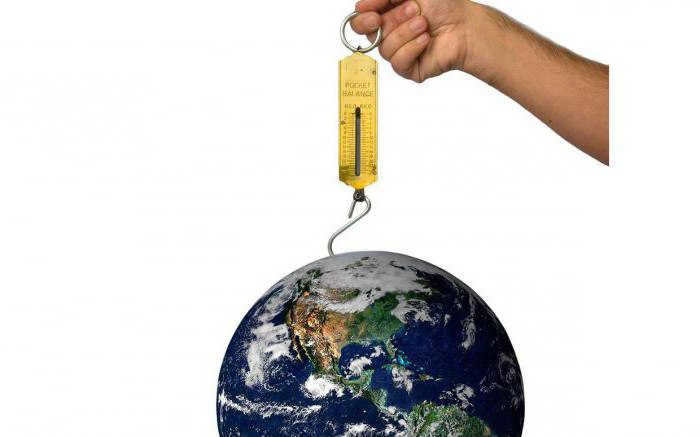
By utilizing the principles of gravity, it is possible to easily determine the weight of our planet, Earth. To accomplish this, a thread is utilized with a small weight attached to it, and its precise location is noted. Adjacent to this weight, a ton of lead is placed. As a result of the gravitational attraction between the two objects, the weight is deflected to the side by a minuscule distance. Remarkably, even a deviation as small as 0.00003 mm permits the calculation of Earth’s mass. To perform this calculation, it is sufficient to measure the attractive force between the weight and Earth, as well as the attractive force between the small weight and the large weight. The resulting data provides the necessary information for accurately calculating the mass of our planet.





